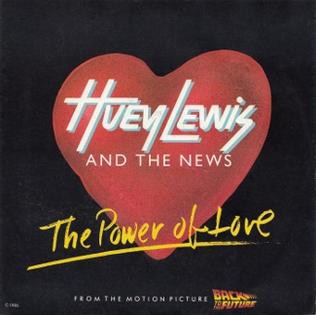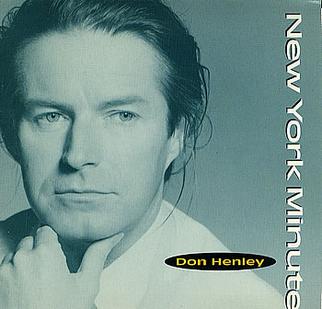 Katrina & The Waves’ “Walking On Sunshine” is one of those rare songs that instantly injects a surge of happiness and energy into anyone who hears it. Since its release in 1985, it has become a quintessential feel-good anthem, synonymous with sunny days, upbeat moods, and the exhilaration of pure joy. The track’s infectious melody, vibrant vocals, and uplifting lyrics have cemented it as an enduring classic that continues to resonate with listeners across generations and genres.
Katrina & The Waves’ “Walking On Sunshine” is one of those rare songs that instantly injects a surge of happiness and energy into anyone who hears it. Since its release in 1985, it has become a quintessential feel-good anthem, synonymous with sunny days, upbeat moods, and the exhilaration of pure joy. The track’s infectious melody, vibrant vocals, and uplifting lyrics have cemented it as an enduring classic that continues to resonate with listeners across generations and genres.
The origins of “Walking On Sunshine” lie with the British-American band Katrina & The Waves, fronted by the charismatic Katrina Leskanich. The band originally formed in Cambridge, England, with a lineup that blended various musical influences ranging from pop and rock to new wave and power pop. They were relatively unknown outside their local circles before “Walking On Sunshine” catapulted them to international recognition. The song, written by Kimberley Rew, the band’s guitarist and principal songwriter, encapsulates an exuberant spirit that perfectly matched the mid-80s musical zeitgeist.
From the first few bars, “Walking On Sunshine” grabs attention with its bright, jangly guitar riff and punchy drumbeat, immediately establishing a lively rhythm that’s impossible to resist. The arrangement is simple yet powerfully effective, combining crisp guitars, steady percussion, and bold keyboards to build a sonic landscape that mirrors the song’s theme of liberation and happiness. It’s a track designed for radio play, dance floors, and any situation that calls for an uplifting soundtrack.
Katrina Leskanich’s vocal delivery is one of the key factors that elevate “Walking On Sunshine” beyond a typical pop tune. Her voice is strong, clear, and filled with genuine enthusiasm, conveying an emotional sincerity that connects with listeners. Her spirited performance perfectly complements the song’s message — it feels as if she’s sharing a personal moment of bliss and encouraging everyone to share in the joy. The vocal harmonies, especially during the chorus, add depth and richness, amplifying the sense of collective celebration.
Lyrically, the song captures the essence of feeling completely and overwhelmingly happy — the sensation of being so elated that it’s as if one is literally “walking on sunshine.” This metaphor encapsulates a universal human experience, one that transcends culture and language. The words are straightforward but effective, emphasizing positivity, confidence, and the irresistible pull of joy. Lines like “I used to think maybe you loved me, now baby I’m sure” suggest a narrative of overcoming doubt and embracing love and happiness, which adds a layer of emotional relatability.
The chorus, with its repeated refrain “I’m walking on sunshine, whoa / And don’t it feel good!” is one of the most memorable and singable hooks in pop music history. It’s a phrase that invites participation, whether in the car, at a party, or during a personal moment of triumph. The repetition reinforces the song’s infectious optimism, making it a perfect anthem for anyone needing a boost or a reminder of the good times.
“Walking On Sunshine” experienced multiple waves of popularity. Initially released in 1983 on the band’s self-titled album, it did not immediately become a hit. However, a 1985 re-release with a re-recorded, more polished version propelled the song into the charts, where it climbed high and became a staple of 1980s pop music. The timing was perfect — the mid-80s were characterized by bright, upbeat music and an embrace of exuberant styles, and “Walking On Sunshine” fit seamlessly into that landscape.
Beyond its commercial success, the song gained a reputation as a cultural touchstone. It has been used extensively in movies, television shows, commercials, and sporting events, often to evoke feelings of celebration, triumph, or sheer happiness. Its ability to instantly transform a scene or mood is unparalleled, making it a go-to choice for moments that demand an emotional lift.
One of the remarkable aspects of “Walking On Sunshine” is its enduring relevance. Despite the passage of decades and shifting musical trends, the song remains fresh and impactful. Its production values, while clearly of the 1980s, have a timeless quality thanks to the song’s strong melody and universal appeal. It is frequently covered and sampled by artists across genres, underscoring its influence and importance in popular music history.
The song’s infectious energy also had a broader impact on the perception of Katrina & The Waves as a band. While they enjoyed other successes, “Walking On Sunshine” remains their defining hit, often overshadowing their other work. Yet this is a testament to the power and memorability of the track — it became the signature song that defined their legacy. For many listeners, the name Katrina & The Waves is inextricably linked to this single exuberant anthem.
Beyond the pure musical and commercial impact, “Walking On Sunshine” can be viewed as a cultural symbol of empowerment and positivity. At a time when popular music was exploring diverse themes, including darker and more complex emotions, this song unabashedly celebrated joy and confidence. It has often been embraced by audiences seeking an escape from the stresses of daily life, offering a moment of pure, unfiltered happiness.
The song’s appeal also lies in its ability to be both personal and universal. Its upbeat sound invites dancing and celebration, but the lyrics’ emphasis on newfound certainty and love resonates on an intimate level. This duality allows it to connect with a broad spectrum of listeners — from those enjoying a carefree summer day to those overcoming personal challenges and discovering happiness.
Musically, “Walking On Sunshine” represents a perfect balance of pop craftsmanship and rock energy. The song’s driving rhythm, catchy guitar lines, and anthemic chorus showcase the songwriting skills of Kimberley Rew and the band’s cohesive performance. The production, crisp and bright, highlights the melody and vocals without overwhelming them, allowing the song’s emotional core to shine through.
The song’s structure, featuring a strong build-up to the chorus and a memorable bridge, keeps listeners engaged from start to finish. This dynamic progression helps maintain the song’s momentum, making it ideal for repeated listening. The combination of upbeat tempo and joyful lyrics creates an irresistible urge to move and sing along.
Over time, “Walking On Sunshine” has also taken on a nostalgic dimension, often associated with the 1980s’ vibrant and optimistic pop culture. It evokes memories of a decade marked by colorful fashion, bold musical experimentation, and an overall sense of hopefulness. For many, the song recalls youthful moments and carefree times, adding to its emotional weight and continued popularity.
The track’s impact on popular culture is extensive. It has been featured in numerous films such as American Psycho, Look Who’s Talking, and The Secret of My Success, where its bright, upbeat tone contrasts or complements on-screen action. Television shows across various genres have used it to underscore moments of happiness, realization, or triumph, further embedding it in the cultural consciousness.
In advertising, “Walking On Sunshine” is frequently chosen for campaigns promoting happiness, health, and vitality, testifying to its positive associations and broad appeal. The song’s ability to evoke a sense of well-being makes it an ideal soundtrack for products and messages centered around optimism and energy.
Moreover, the song has become a staple at celebrations — weddings, parties, graduations — where its message of joy and upliftment resonates powerfully. Its sing-along quality encourages group participation and shared happiness, reinforcing the social aspect of music as a connector.
The legacy of “Walking On Sunshine” is also reflected in the numerous covers and reinterpretations it has inspired. Artists ranging from pop stars to indie bands have put their own spin on the song, demonstrating its versatility and timelessness. Each new version keeps the spirit of the original alive while introducing it to new audiences.
Despite its overwhelming positivity, the song’s enduring success is not just due to its cheerful vibe but also its musical craftsmanship. Kimberley Rew’s songwriting merges melodic hooks with rhythmic drive in a way that feels natural and unforced. The band’s tight performance and Katrina Leskanich’s commanding vocal presence give the song authenticity and charisma.
The emotional core of “Walking On Sunshine” is its celebration of transformation. The lyrics tell a story of moving from uncertainty to certainty, from doubt to confidence, encapsulated in the metaphor of walking on sunshine. This narrative arc resonates with anyone who has experienced a turning point in life — a moment when things suddenly feel right and the world seems filled with possibility.
This theme of personal empowerment, coupled with the song’s joyous energy, makes it more than just a catchy tune — it becomes a soundtrack for personal growth and happiness. Its message is simple yet profound: happiness is attainable, and when you find it, it feels like you’re literally walking on sunshine.
The timing of the song’s release also contributed to its impact. The mid-1980s were a period of economic recovery and cultural optimism in many Western countries. Music that celebrated positivity and energy was embraced by audiences eager for uplifting entertainment. “Walking On Sunshine” captured that spirit perfectly, offering an aural expression of hope and joy.
Katrina & The Waves, while not as widely known for other hits, capitalized on the song’s success with continued touring and recording. However, “Walking On Sunshine” remained their hallmark, a defining moment that overshadowed much of their other work but also ensured their lasting place in music history.
The song’s appeal crosses demographic boundaries, embraced by different age groups, cultures, and backgrounds. Its universal theme of happiness and the metaphor of sunshine as a symbol of joy transcend language and geography. It’s a song that can be understood and appreciated globally, contributing to its longevity.
In live performances, “Walking On Sunshine” often serves as a highlight, eliciting enthusiastic responses and sing-alongs. Its energetic tempo and catchy chorus create an atmosphere of celebration, making it a perfect closer or encore. The song’s ability to unite audiences in shared happiness underscores music’s power as a communal experience.
From a broader perspective, “Walking On Sunshine” reflects the best of what pop music can offer — accessibility, emotional resonance, and lasting impact. It shows how a well-crafted song, delivered with passion and skill, can become an enduring cultural artifact. It’s a reminder that music’s primary purpose is to move people, whether emotionally, physically, or both.
The song’s cultural footprint is significant. It appears on countless “best of” lists, nostalgic compilations, and party playlists. It’s a frequent choice for mood-boosting playlists and has become emblematic of positive, upbeat music from the 1980s.
In educational contexts, “Walking On Sunshine” serves as an example of effective songwriting and arrangement, illustrating how melody, rhythm, and lyrics combine to create a memorable and impactful song. Its structure, harmony, and production provide useful study material for aspiring musicians and producers.
As digital streaming platforms continue to introduce classic hits to new generations, “Walking On Sunshine” enjoys a resurgence in popularity. Its inclusion in viral videos, advertisements, and social media challenges helps maintain its presence in contemporary culture. It proves that a great song never truly ages but can be rediscovered and appreciated anew.
The song’s ability to evoke strong emotional responses is perhaps its greatest strength. Whether it brings back memories of youth, provides comfort in difficult times, or simply makes listeners want to dance, “Walking On Sunshine” taps into something fundamental about human nature — the desire for happiness, connection, and celebration.
In sum, Katrina & The Waves’ “Walking On Sunshine” stands as a beacon of positivity in popular music. Its blend of infectious melody, spirited vocals, and uplifting lyrics has ensured its place as one of the most beloved songs of all time. It continues to inspire joy and optimism, proving that sometimes all it takes is a catchy tune and a little sunshine to brighten the world. The song remains a timeless reminder that happiness is within reach, and when it hits, you truly feel like you’re walking on sunshine.


